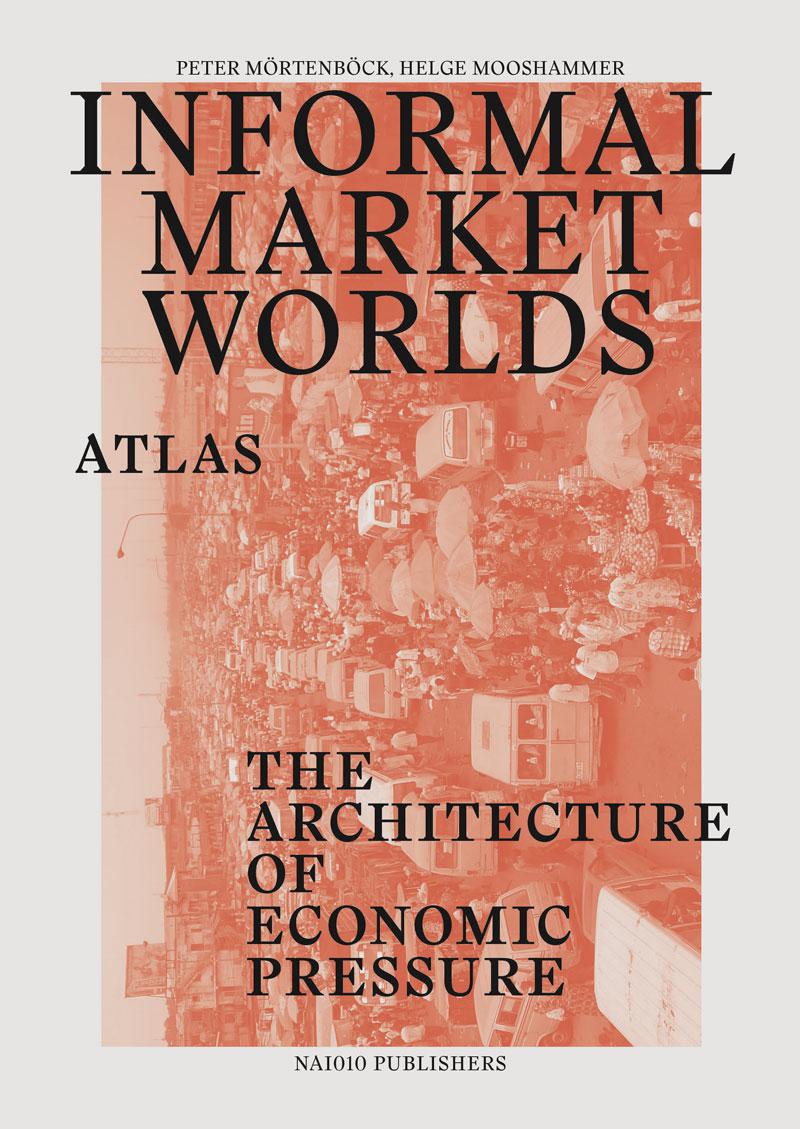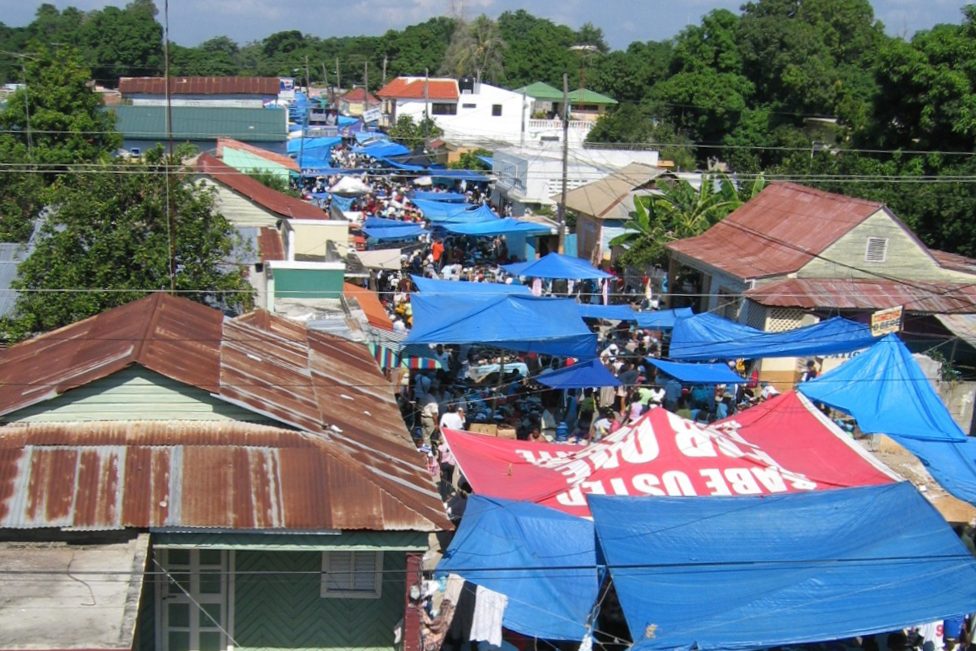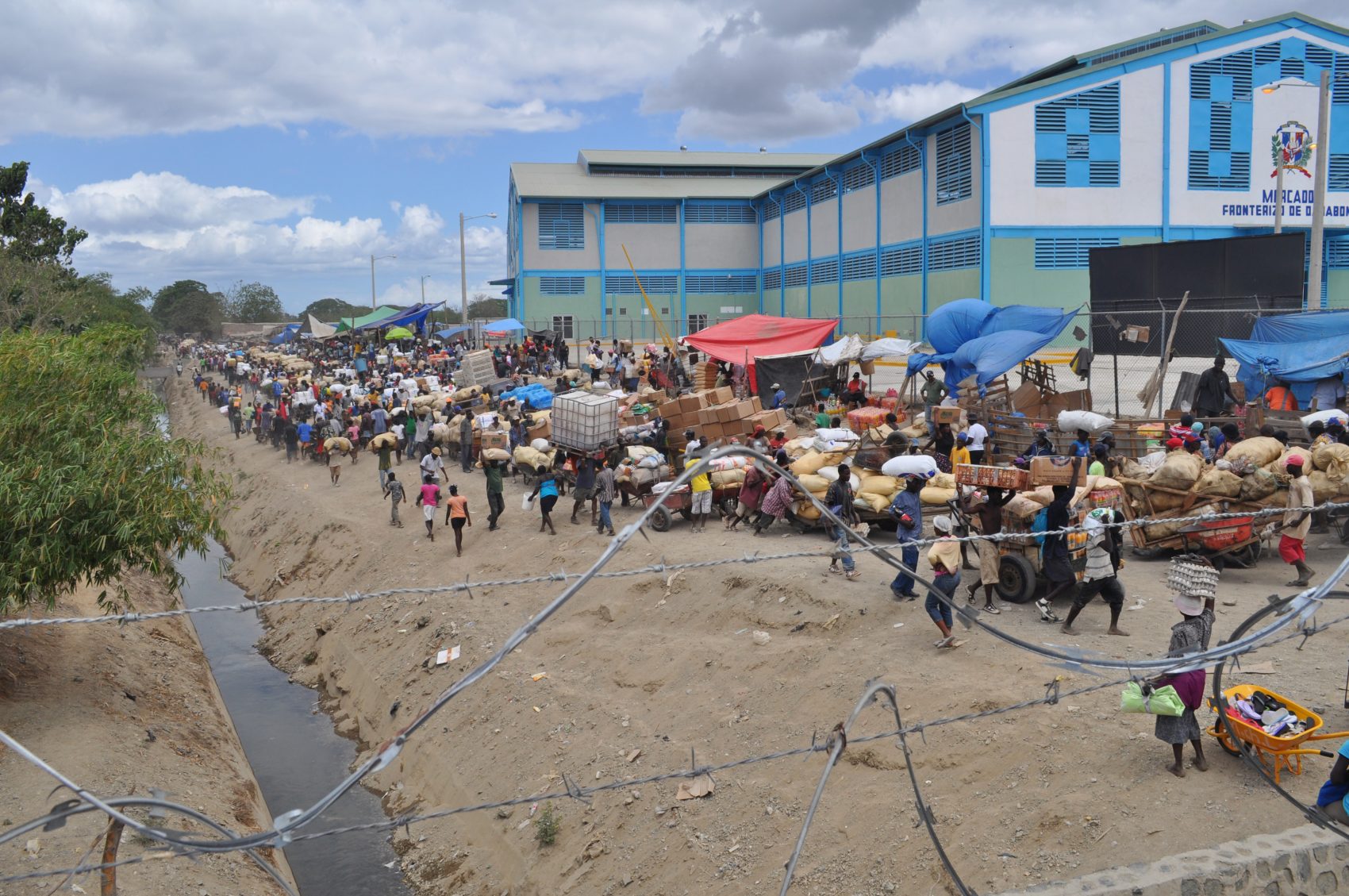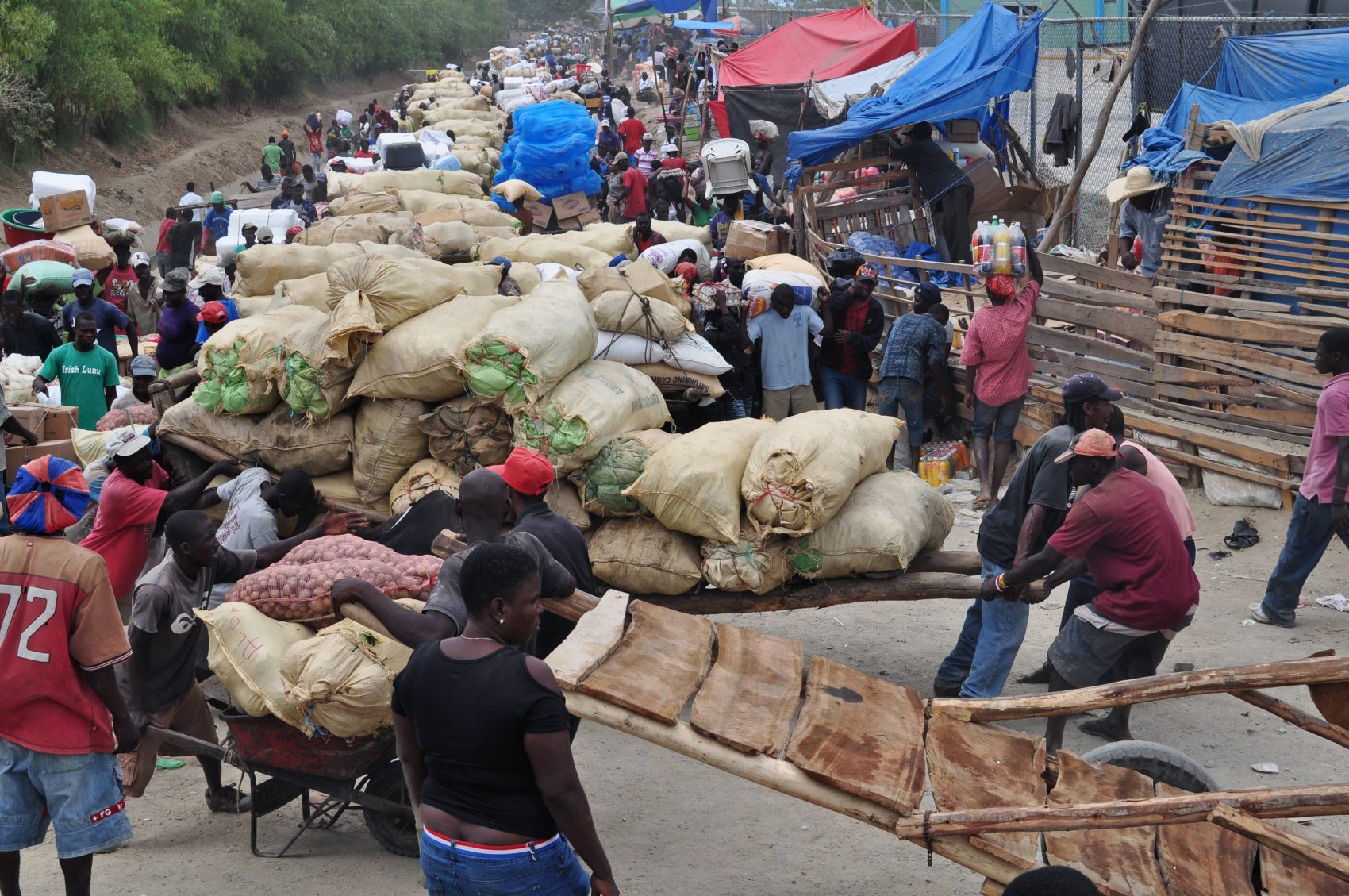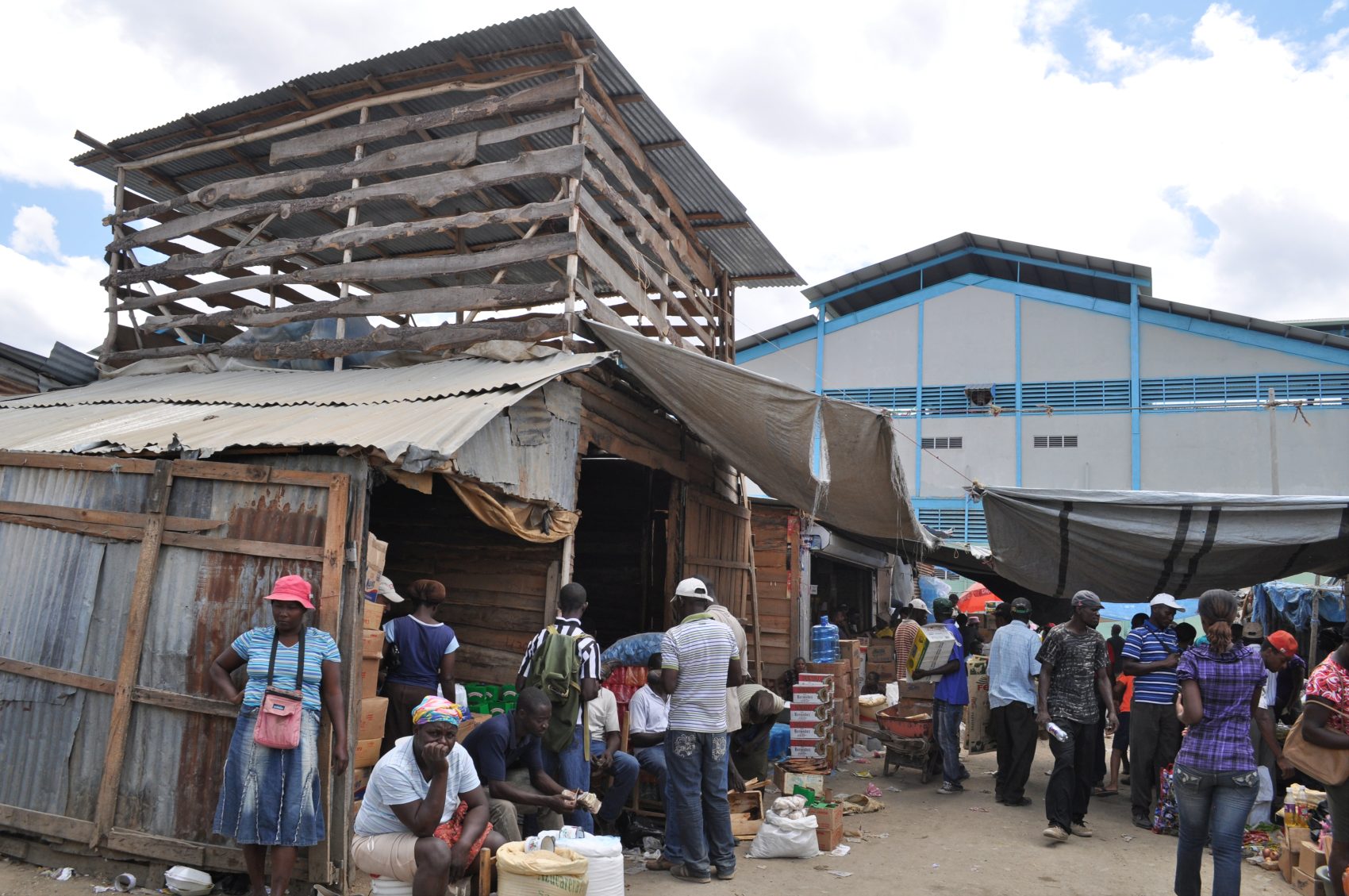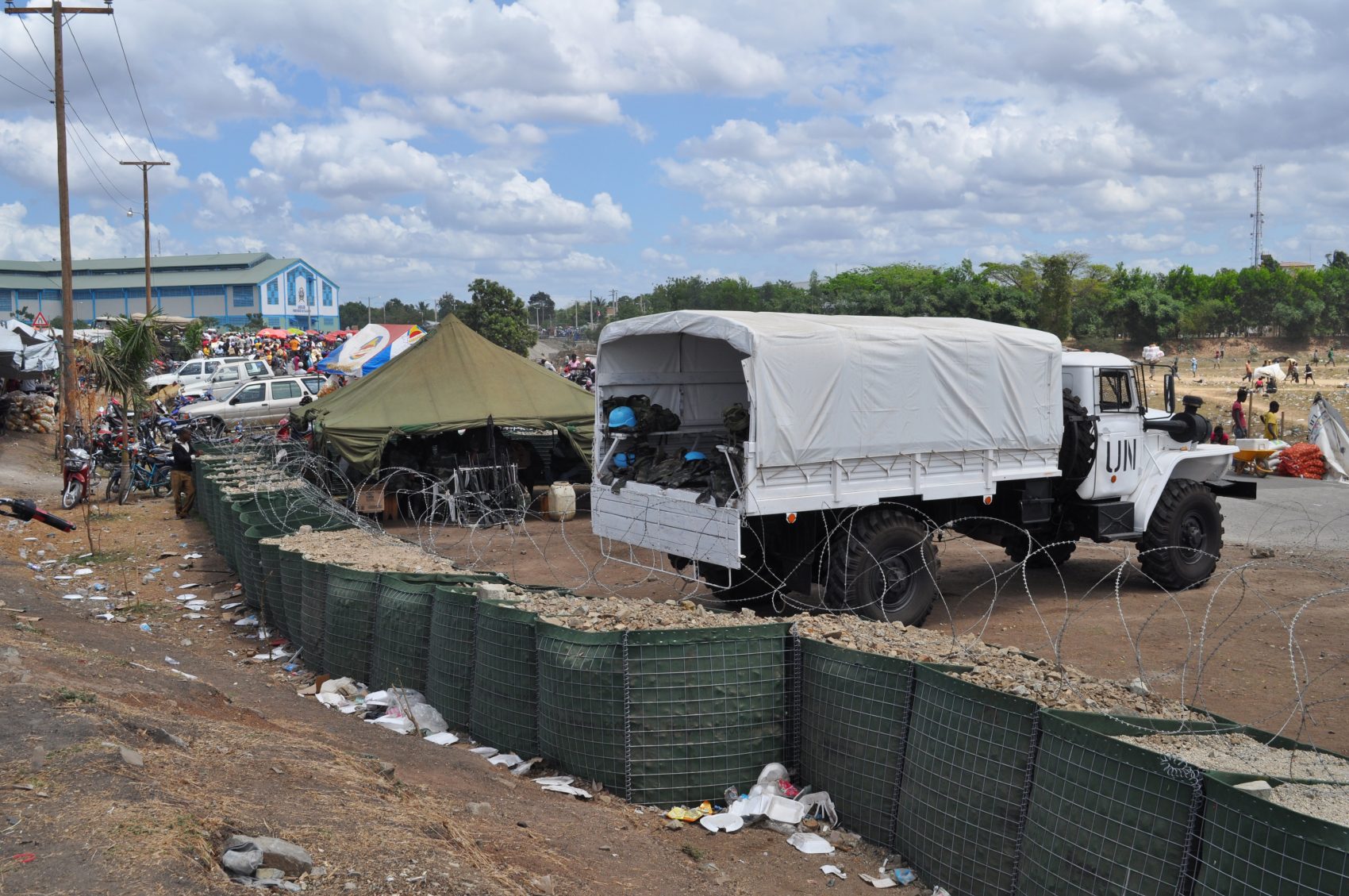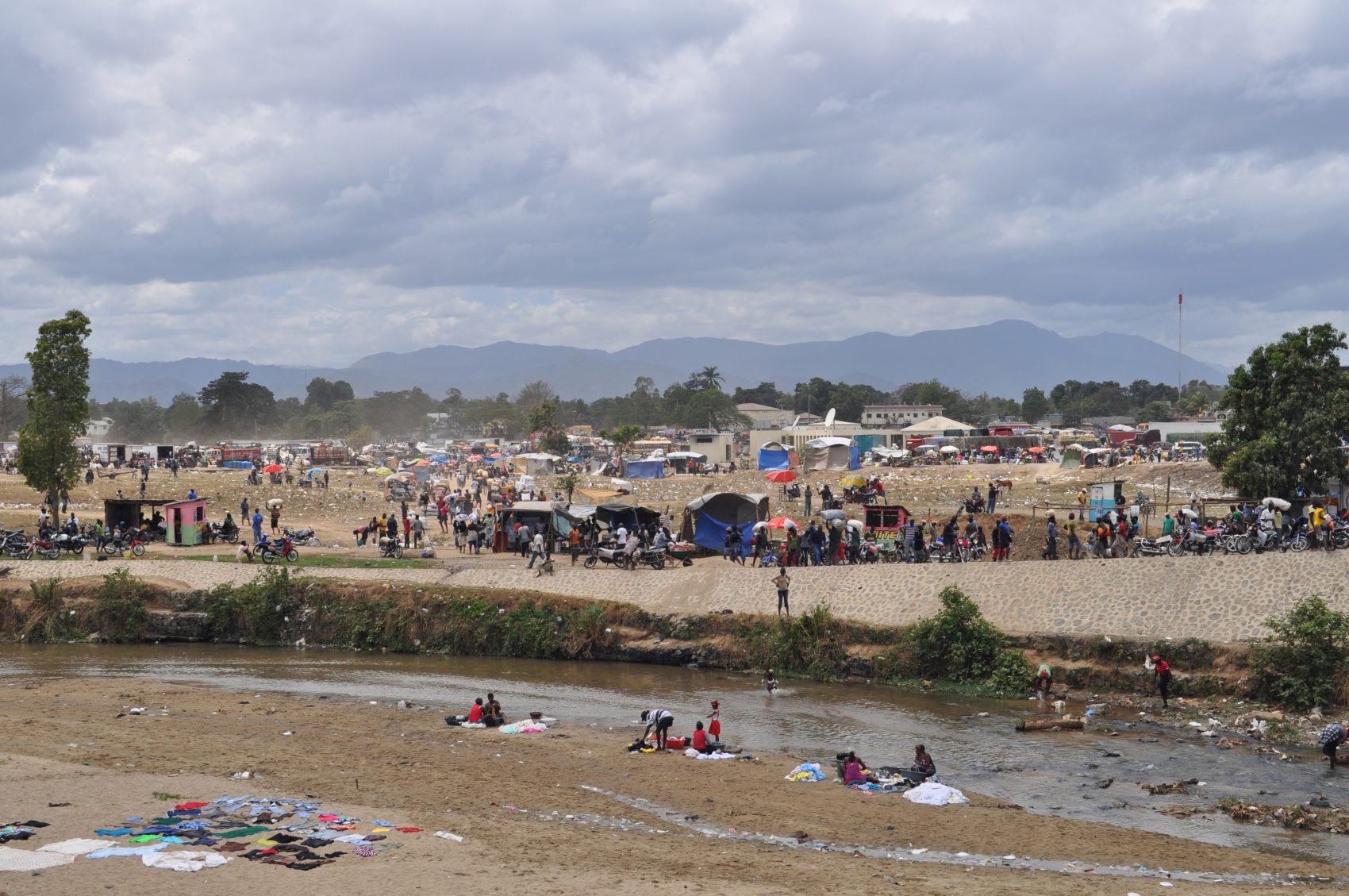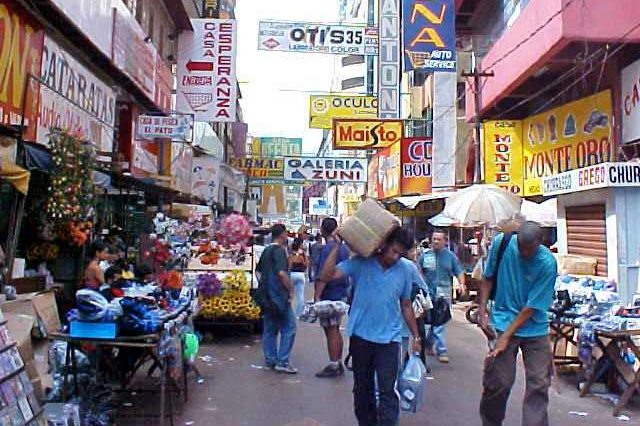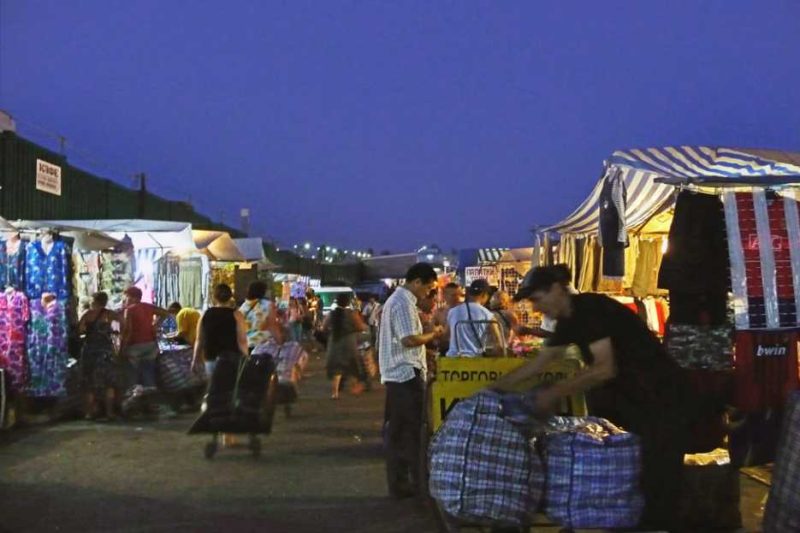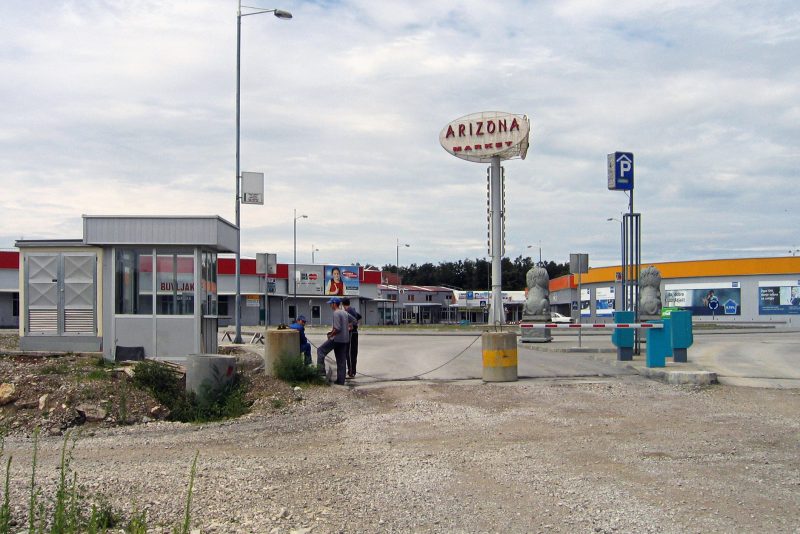- TRANS-NATIONALITY: LEGAL ARCHITECTURES
- FWF
- 2010-2015
- Other Markets
Case Study: Dajabón Border Market

Dajabón Border Market, Dominican Republic, 2012
THE MARKETS: COMMERCIAL EXODUS
The border between the Dominican Republic and Haiti divides the Hispaniola Island in a north-south direction. The division of the island is a living trace of the arbitrary nature of colonialism, and consequently, it is evidence of how this has generated a continuum of social and political permutations. Still today, these permutations strongly inhabit the popular imaginary and political realms of both countries.
The wealth produced on the island is mostly accumulated in the capitals of each country: Port Au Prince and Santo Domingo. However, in the late 1980s, decades after the fall of the Trujillo dictatorship in the Dominican Republic and when the Duvaliers were out of power in Haiti, a dynamic between the northern border towns of Ouanaminthe (in Haiti) and Dajabón (in the Dominican Republic) emerged: on Mondays and Fridays Haitians would cross to buy agricultural products and on Saturdays, Dominicans would cross to buy cosmetics, used clothing and electronic devices. But it was in the 1990s, when the Organization of American States imposed an embargo on Haiti and Ouanaminthe became a terrestrial port for the import of gas and other oil derivatives, that the markets achieved their current economic significance, attracting Haitians from all over the country to partake in the cross border trade. Based on these commercial opportunities, Ouanaminthe has expanded dramatically, outgrowing its Dominican neighbour.
Today, thousands of people cross from Haiti on Tuesdays and Fridays to buy and sell products in so-called ‘international fairs’ in Dominican border towns. Ouanaminthe in Haiti and Dajabón in the Dominican Republic are the most developed cities along the border, but similar border markets take place at the crossings of Anse Pitre – Pedernales and Mal Passe – Jimaní. Integrated in a global economic network, evidence of which is found in the products that are exchanged, the market fairs provide jobs and income as well as the main source of goods locally, with 97% of the population buying their supplies there.
Location(s): Border between Haiti and the Dominican Republic On-Site Collaborators:MELISA VARGAS
GERALD MURRAY
Visualisations: TIM KOBLUN
PATRICIA ROTH
Photography: MELISSA VARGASGERALD MURRAY
Results of this case study were published in:
On market days Haitian vendors and buyers can cross the border without producing a passport or visa. However, they are restricted to stay within 100 yards of the border. That way, the official border, which in Dajabón runs along the Massacre River, is ‘unofficially’ loosened and displaced. Informal as they are, the market fairs are generally regulated by the Dominican army and the local authorities of the border towns. Yet, without any official legal base of the markets, these regulations are often arbitrary and Haitian traders are reported to regularly suffer from discriminatory abuse and fee extortion by the Dominican border guards.
In many of the Dominican border markets the nationality of vendors has a bearing on the size of stalls they set up and on the fees they pay for this, too. Every other Haitian vendor sets up a stall smaller than two square metres in size, as they need to bring in their trade on foot. The fee they pay to Dominican guards can amount to approximately 750 Pesos. Dominican vendors can rely on people who help them deliver their goods by bike or car. Three quarters of Dominican vendors have more than two square metres available but often need to pay less than 50 Pesos to the Dominican guards. In Dajabón, in order to avoid having to pay bribes to the guards, many Haitians cross the border by wading through the shallow waters of the Massacre River in the early hours of the market days.
INTERNATIONAL AID
Initially, the market in Dajabón took place right in the city centre spreading across nine blocks with informal trade also emerging along the Haitian approach to the border bridge. In 2005 the United Nations Development Programme and the European Union decided to fund a new market building comprising 2.264 internal and external vendor modules, a customs house and a new bridge across the Massacre River. In 2010, following a major earthquake in Haiti and the subsequent onset of a cholera epidemic, the existing street market was pushed to the area of the then still unfinished new market building. Market activities spread out along the back of the market building into fields and wood land, many of which have remained there in the open even after the opening of the new market hall.
The main activities at the border are commercial and for many of the Haitians and Dominicans living along the border these trade operations represent the main form of income. Tens of thousands of products enter and exit through its various points, with the most distinctive quality of this form of commerce being its transactional character. An impressive amount of capital (in the form of goods and labour) passes through the region but doesn’t get accumulated in it. Those who engage in the exchanges can only survive through the commerce but they do not get involved in long-term development projects.
To no small extent, the character of the border is affected by the intervention of multiple agents that operate from a global context as well as from a bi-national one (that is from the Dominican Republic and/or Haiti). The border thus becomes a series of sites with a strong multinational character, comprising the interests and struggles of various institutional and economic entities as well as a multiplicity of social groups.
CONTRIBUTOR(S)
Melisa Vargas is a Dominican architect, urban planner and teacher. She has worked as an analyst, contractor and consultant for the United Nations, the Inter-American Development Bank (IDB), the ERASMUS+ European Union, the University of Pennsylvania, Columbia University, and the Technical University of Vienna. She has led editorial projects for the Venice Architecture Biennale, and has collaborated in publications such as MONU Magazine on Urbanism and Informal Market Worlds. Her research on the Haitian-Dominican border and informal settlements in Santo Domingo was recognised by the Caribbean Architecture Biennale as well as by the Vice President of the Dominican Republic. She was manager of the Research Division of the Institute of Higher Education of the Ministry of Foreign Affairs of the Dominican Republic, where she developed research on the fragility and resilience of the Haitian-Dominican border, and is currently a consultant for IDB on the renovation of El Conde Street and Columbus Park in Santo Domingo.
